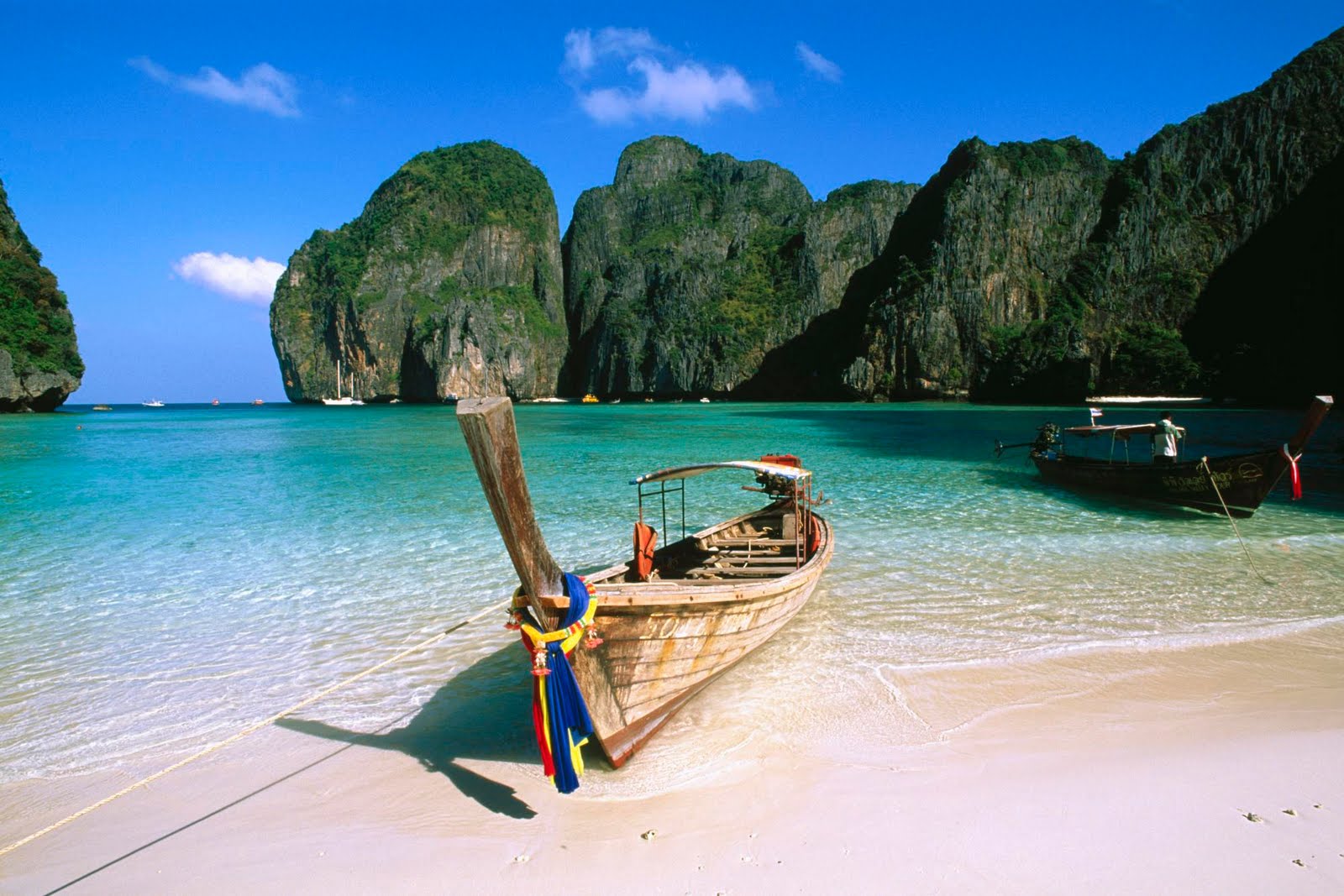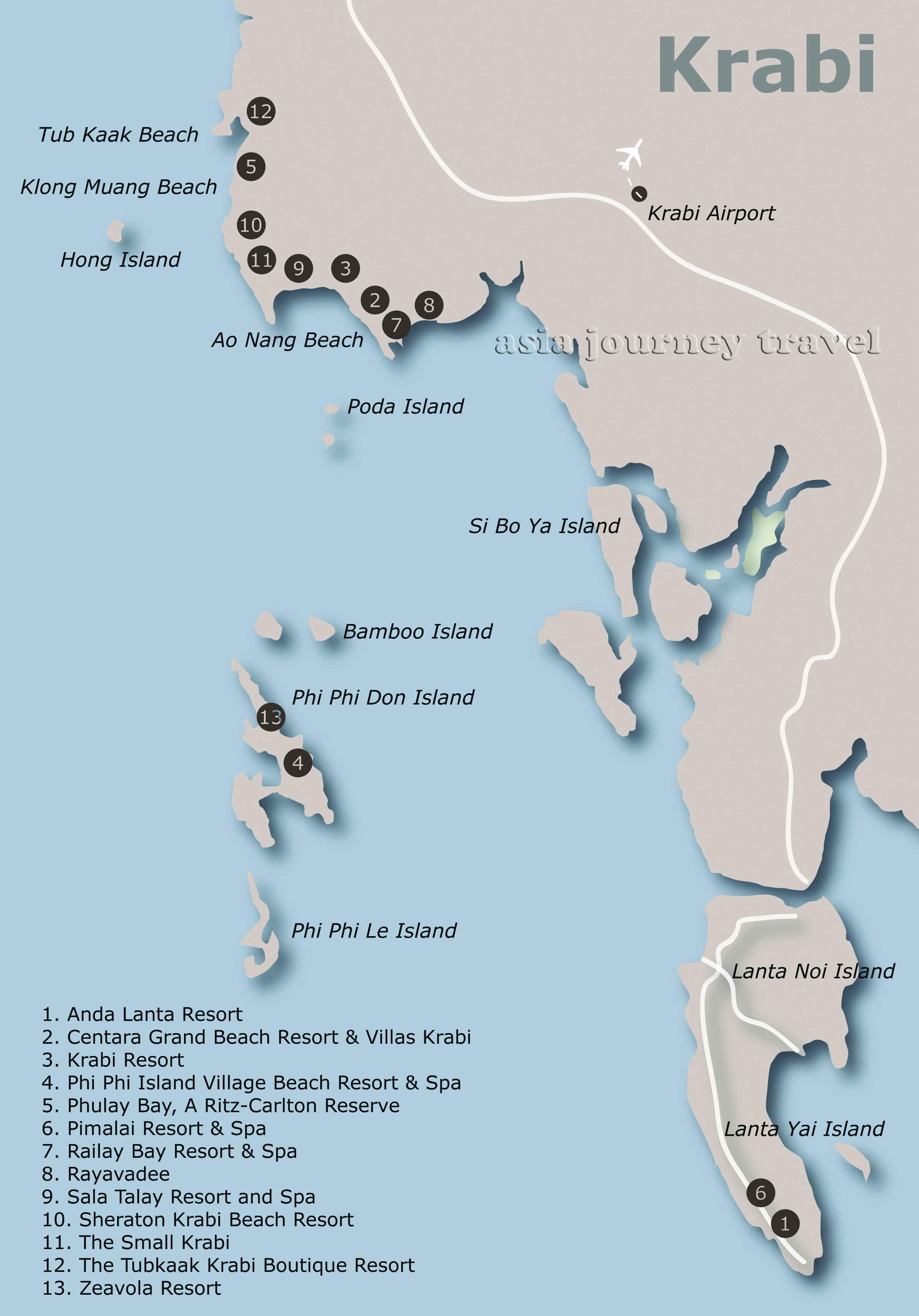KRABI, KOH LANTA HOTELS
KRABI, KOH LANTA TOURS
KRABI

Krabi Province is a popular beach destination at the Andaman Sea in Southern Thailand. Krabi, a coastal province, abounds with countless natural attractions that never fail to impress tourists. Such attractions include white sandy beaches, crystal clear water, fascinating coral reefs, caves and waterfalls, as well as numerous islands. The distinguishing feature of both Krabi and neighboring Phang Nga is the massive limestone karsts, rising vertiginously out of the flat rice paddies on land and as islands from the sea. Add in some gorgeous beaches and excellent scuba diving and rock climbing, and it's little wonder that tourism in the area has been booming. While less commercialized than neighboring Phuket, Krabi Province cannot be described as undiscovered: it receives two million visitors a year, and the major tourist areas cater extensively for foreigners. The best time to visit Krabi is between the months November to April when the area's climate is less hot than usual. During this period the island gets a lot of dry North Easterly winds, so giving dry blue skies and starry nights. Then, down on the beaches one can enjoy nice sea breezes. From June to November the area gets a lot of rainfall, more on average than the rest of the country. During this period the island gets a lot of moist South Westerly winds, so giving a mixture of dry days and wet ones. The sea stays at a warm 29°C all year round. Visitors however, coming in this period will find it cheaper.
KOH LANTA
Ko Lanta (เกาะลันตา) is an island off the Andaman Coast of Southern Thailand. Like many other destinations in Krabi Province, it is known for its diving and long white beaches. Ko Lanta consists of several islands, the two largest of which are Ko Lanta Noi (เกาะลันตาน้อย, "Small Lanta Island") and Ko Lanta Yai (เกาะลันตาใหญ่, "Big Lanta Island"). However, Ko Lanta Yai is where all the tourist action is, so this article will refer to it simply as "Ko Lanta". Ko Lanta is popular with tourists seeking a holiday away from the parties. It's popular with a significantly older crowd than nearby Ko Phi Phi: more walking on the beach and watching the sunset than drinking and dancing. However, there are plenty of bars and the longer term stayers are friendly and know how to party! It is also popular with families with young children, and of course, with divers. Ko Lanta can provide a party if you know where to look. Ko Lanta is a little less well-known than Ko Phi Phi, which has become more commercialised and corporate, but it is hardly undiscovered: the several beaches on the west coast of Ko Lanta Yai are each strung with a line of resorts and bungalows, although the farther down the island you venture, the less this is true. And even when the island is at it fullest, there will be a quiet place for you to relax - the beaches are never full. Ko Lanta is especially popular with Swedish tourists: although the "tourist language" is English as it is in most places in Thailand, and you will find menus and so on are translated into English, expect the poolside language to be Swedish much of the time. However, there are still many English and Irish bars and restaurants to visit.
KOH PHI-PHI
Ko Phi Phi (หมู่เกาะพีพี) is a small archipelago in Krabi Province, Southern Thailand. The named islands are:
Ko Phi Phi Don, the largest and only populated island.
Ko Phi Phi Leh, a smaller island to the south, popularised when parts of the movie "The Beach" were filmed there. Uninhabited apart from bird nest harvesters and a few Maya Bay wardens; expect plenty of tourists during daylight hours, especially in Maya Bay, also known as 'the beach'.
Ko Mai Phai ('Bamboo Island'), a small low-lying islet to the north of Phi Phi Don with several good beaches.
Ko Yung (Yung Island) is north of Ko Phi Phi Don. The island has a stone beach in the east and small sandy beaches at the foot of the hills. It is teeming with various kinds of colourful coral reefs.
Bida Nok and Bida Nai, two small adjacent limestone karsts to the south of Phi Phi Leh, with near-vertical cliff walls rising from the sea. Most of the development of Phi Phi Don is situated in or around Ton Sai village, which is on the low, sandy isthmus that joins the two hilly spurs that comprise the rest of the island. There are also other, quieter resorts on Long Beach, Laem Thong, and at other less accessible areas of the island. Koh Phi Phi was devastated by the Indian Ocean tsunami of December 2004, when nearly all of the island's infrastructure was wiped out. Redevelopment has, however, been swift, and services are back with building regulations in place to limit the height of new buildings to preserve the island's stunning views. It should be noted that, while very laid back, many of the local islanders are Muslim. You will lose considerable respect if you walk around town in your skimpies (this applies to Buddhist areas of Thailand too!). While many tourists do in fact parade down Main Street in their Speedos or thong bikinis, to avoid offending your hosts, it's usually best just to throw on a pair of shorts or a sarong; similarly, topless on the beaches, while grudgingly tolerated by most locals, is also probably best avoided. Weather in the region is tropical - there are only two seasons: the hot season from January to April, and the rainy season from May to December. Temperatures during the year average 25ºC to 32ºC (77ºF to 89.6ºF) and the yearly rainfall averages 2568.5mm. Unlike in say Europe, the rain in this region comes down heavily over short periods.
KRABI & KOH LANTA & KOH PHI-PHI MAP
